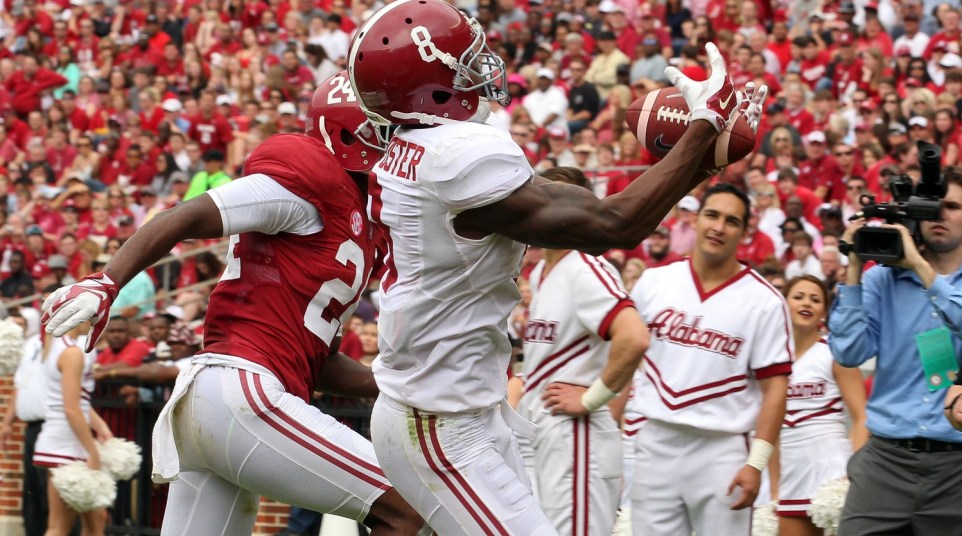Alabama WRs aside from Amari Cooper should be better in '15
On paper, Alabama’s receivers looked excellent entering the 2014 season.
The reality: Amari Cooper produced the greatest single season by a receiver in Crimson Tide history, offensive coordinator Lane Kiffin injected life into the passing game … and the rest of the receivers underperformed.
DeAndrew White, a promising No. 2 option, did catch 40 passes, but saw his receiving yards (534 to 504) and yards per catch (16.7 to 12.6) slip. The drop by fellow senior Christion Jones was even steeper. Jones saw his receptions dwindle from 36 to 19 and his elite ability as a kick and punt returner fall off the map.
Both players measured at less than 6-foot during the pre-draft process, and neither got selected last week, instead signing undrafted free agent contracts.
In many ways, Cooper’s absurd performances hid the struggles by the rest of the receiving corps — and even tight end O.J. Howard, who caught just 17 passes.
Flash cut to this year’s depth chart. Cam Sims, expected to be a major contributor, tore his ACL. It’s unlikely he plays any sort of role on the ’15 Alabama team.
But, judging by spring practice, Robert Foster and ArDarius Stewart are big-time athletes capable of teaming with Kiffin and whomever starts at quarterback to provide legitimate production. Then there’s Chris Black, a former five-star who enters the fall with the most experience of any current Tide receiver. He nearly outplayed Jones as the team’s third option last year, catching four fewer passes.
Foster and Stewart, co-MVPs of the team’s A-Day game, both redshirted in 2013 and played sparingly last season. But they appeared comfortable and confident handling the increased responsibility. Foster also came to Tuscaloosa as a five-star talent, in many people’s minds the best receiver of the ’13 class.
Raheem Falkins, another member of that class, quietly adds depth and caught three passes for 28 yards in that same A-Day game.
There’s not a Cooper in this group, at least not in ’15 and likely never. But in some ways the Alabama offense could benefit from defenses needing to game plan for a variety of good receivers. Kiffin and the starting quarterback, be it Jacob Coker or someone else, can worry less about getting one playmaker open and more about taking advantage of the weaknesses in coverage with a balanced set of options.
Running back Kenyan Drake, who should be close to 100 percent by the start of the season, offers a lot of intrigue catching passes out of the backfield or maybe even lining up in the slot on occasion. He’s tough to tackle in the open field and exhibits great quickness on the move.
If the team finally can get Howard more involved and showing some progress with his attitude and aggressiveness, the Tide passing game should be much deeper and well-rounded than it was one season ago.

